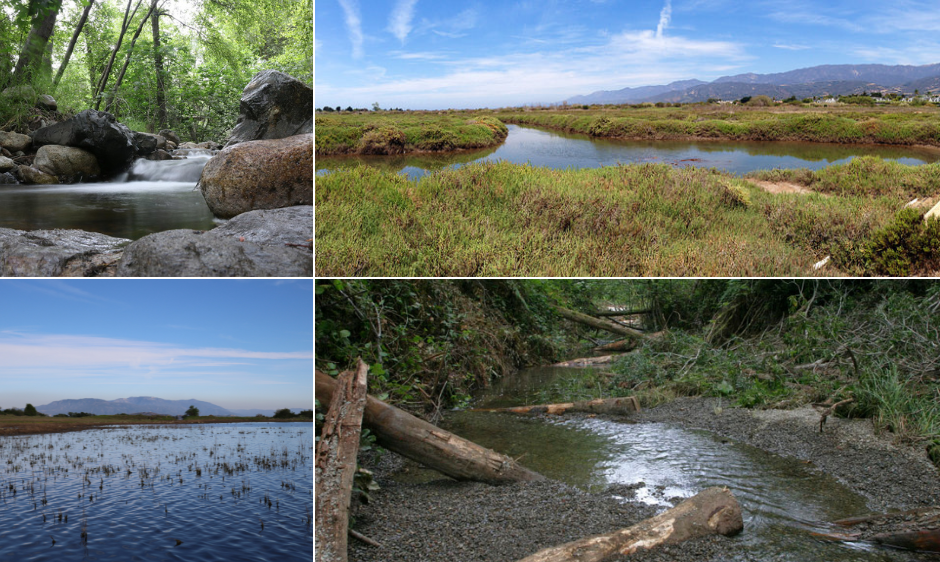
We’re celebrating dual restoration milestones this fall! As you may know, a new U.S. Fish & Wildlife Service authorization was approved, and we’ve got more good news: the Statewide Restoration Permit (Order) was adopted and the Programmatic Environmental Impact Report (PEIR) was certified by the State Water Resources Control Board (SWRCB) by a unanimous vote!
As you know, we’re passionate about why we need more beneficial habitat restoration across California now – not years from now – and at scale. As part of Sustainable Conservation’s Statewide Aquatic Habitat Restoration Permitting Initiative, we provided technical assistance to the SWRCB to help develop a permit and PEIR for commonly done aquatic and riparian habitat restoration project types. This is an important action to create a more efficient restoration permitting process while ensuring essential environmental protections stay in place.
Fast Facts
Doing a restoration project in or around waterways and wetlands? You need to apply for a permit from the SWRCB or one of their nine Regional Water Quality Control Boards to comply with the federal Clean Water Act and the California-specific Porter-Cologne Water Quality Control Act.
There is an accelerated pathway for smaller-scale projects, but this new companion authorization applies to larger projects (over 5 acres or 500 linear feet of riparian waterway) that don’t qualify under the Small Habitat Restoration Project designation.
Testimonials
“The statewide restoration General Order and PEIR is a game-changer for our work to restore aquatic habitat in California. With this new regulatory tool, we no longer need to intentionally limit the size of our restoration projects to meet stringent permitting requirements and can instead focus on maximizing ecological benefits to achieve truly transformative restoration. This will enable us to implement restoration at a pace and scale that is more commensurate with the enormity of the challenges we face.” – Peter van de Burgt, North Coast Restoration Project Manager at The Nature Conservancy in California
“California wineries have made significant investments in years past to restore streams and improve their functioning. The State Water Board’s adoption of the General Order for restoration projects should make it easier for Wine Institute’s member wineries to continue this important work by reducing the time necessary to obtain permits. With California’s changing climate, it is more important than ever that state agencies partner with private landowners to make projects that will help protect vulnerable ecosystems easier to implement by simplifying permitting.” – Noelle Cremers, Director, Environmental and Regulatory Affairs at the Wine Institute
“We anticipate this General Order will save our Elk River Program at least a year on our project implementation timeline and tens of thousands of dollars in costs in EIR preparation alone. We were prepared to develop a PEIR for the whole program, annual updates to the California Environmental Quality Act (CEQA,) and permits for each implementation phase.” – Patrick Samuel, Bay Area Regional Director, and Darren Mireau, North Coast Regional Director, CalTrout
“Having this Order in place will help save time and money and avoid delays for critically needed restoration projects that restore degraded habitats, increase habitat connectivity, improve water quality, sequester carbon, and increase our resilience to climate change – all of which benefit wildlife, waterways, and people. Having a more efficient process in place is an important incentive to complete more restoration projects in a timely manner, including much-needed floodplain reactivation projects on the region’s farmland (primarily rice lands,) wildlife refuges, and the bypasses currently designed for flood protection.” – David Guy, President, Northern California Water Association
How to Use the New Order and PEIR
We encourage you to take advantage of this new process to move your restoration projects forward by working with your local Regional Water Quality Control Board!
We expect the final Order and PEIR documents to be posted on the SWRCB website by the end of the calendar year. In the meantime, SWRCB staff told us how applicants can get an early start by doing the following:
- Read the proposed final Notice of Intent to see if your project fits under the eligible project types, and review the process and required application information. You can see all of the Proposed Final documents here.
- Until the final documents are posted, you can cross-reference the change sheet to the Proposed Final Order and PEIR, so you can see changes that will be made to the proposed final documents.
- Contact your Regional Board to request the required 30-day pre-filing application meeting – a required meeting unless your Regional Board waives it. You can learn about how they intend to roll out the Order during this early implementation phase and get essential input on your project and proposed environmental protection measures.
- After you have a meeting with Regional Board staff, you can start preparing application materials and submit to the approving Water Board as discussed during the pre-filing application meeting
- The Programmatic Environmental Impact Report (PIER) is certified and can be utilized or tiered off of now by project proponents and agencies with projects whose impacts are within its scope. You can bring this to the attention of the State or local agency who needs to comply with CEQA. Figure 1-2 within the PEIR Introduction chapter summarizes how the document can be used.
